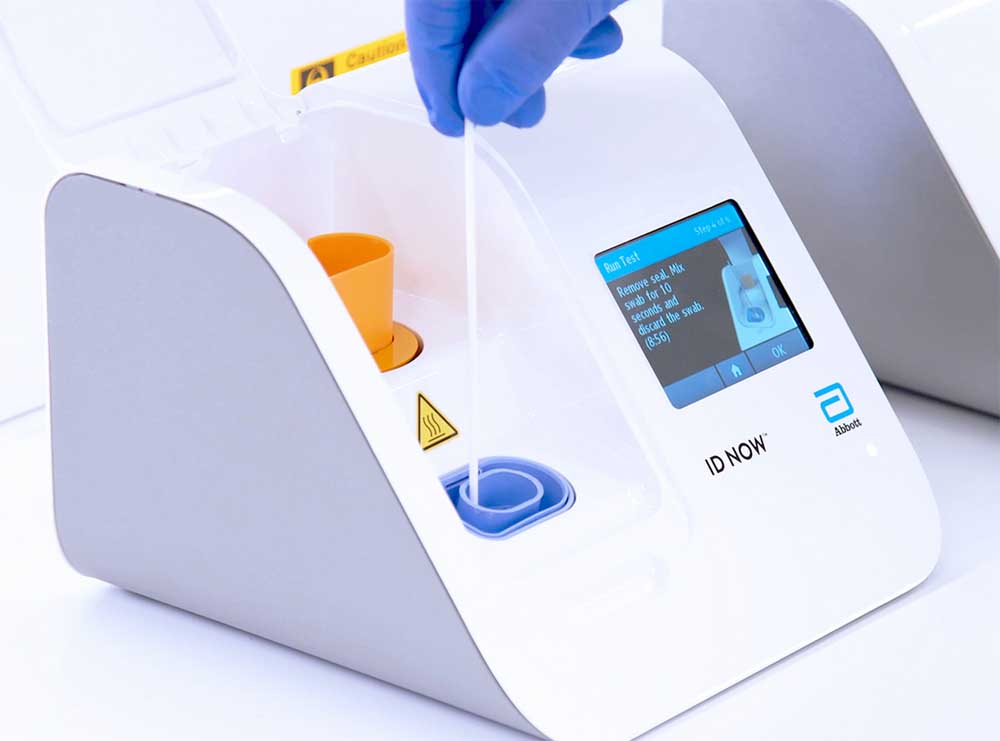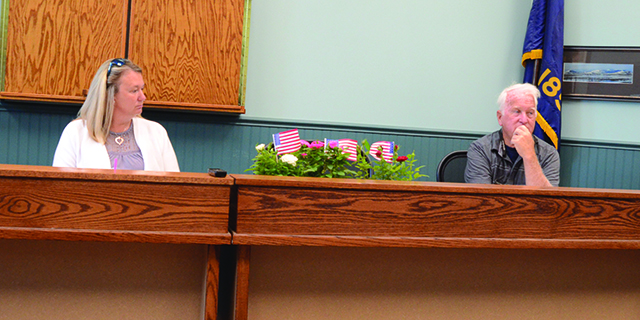Opening rural Oregon and testing Wallowa County’s patience
Published 3:30 pm Monday, April 27, 2020

- The Abbott Labs rapid tester can return COVID-19 results in a matter of minutes. The federal government, who is distributing them, sent only 15 to all of Oregon, and included only enough material for 24 tests each.
As the COVID-19 curve begins to flatten in Oregon, thoughts of partially “opening” Wallowa County and the state are bubbling to the surface like a stove pot about to boil. There is urgency here and across rural Oregon. For small businesses, staying closed means continued hardship, if not extinction. No amount of takeout meals can substitute for Chief Joseph Days crowds.
Last week, Wallowa County commissioners, along with others in the Eastern Oregon Counties Association, asked for a “conversation” with Gov. Brown about a cautious, local, and limited opening in those few rural eastern Oregon counties where COVID-19 appears to be absent or minimal. Instead, they got a statewide mélange of voices, little conversation, and not much guidance except an officious press release and a day later a draft opening plan that was withheld from the public.
Brown’s April 20 draft guidelines to open rural (or any) communities follow federal guidelines and include 1) a declining number of cases and people with influenza-like symptoms, 2) sufficient PPE and health care system capacity, and 3) “robust testing and contact-tracing capacity.” Wallowa County can likely meet all of these except the latter.
And so, before we can open anything locally or across the state, we MUST have testing. Federal and state guidelines demand it. We need, as Dr. Fauci said on Meet the Press, “…the ability to test extensively, to isolate identified cases and carriers, and we must have contact tracing.” More ominously, Robert Hecht, professor of clinical epidemiology at Yale University, wrote in the Sunday N Y Times that “We need to aggressively search for asymptomatic carriers, particularly among people who have frequent contact with the public.” Those include grocery clerks and health care workers. And they should be tested as often as every five days, he said.
Especially here, we need to confirm that our case count is as low as it seems. About 7,000 people live in Wallowa County. Allegedly, we have had only one case. But fewer than 30 of us have received tests for the virus, none have received tests for antibodies, and no one who is asymptomatic has been tested. Thirty tests is an appallingly small sample (0.4%) to base any life-dependent decision on. Other rural counties have similarly dismal testing statistics. In Wheeler County only 10 people have been tested. In Harney and Grant counties it’s 47 each, or about 0.6%. In Baker, 63 (0.4%). In Lake 65 (0.8%). Only Wheeler County (pop 1,366, testing rate 0.7%) has administered fewer tests than Wallowa County. Wallowa County and Baker County are tied for the lowest testing rate in Oregon. In Multnomah County, 1.3% of the population has been tested.
For rural Oregon counties to have tested less than 1% of their residents does not exactly live up to our President’s March 6th statement at the CDC “Anybody that wants a test can get a test.”
On April 9, the U.S Department of Health and Human Services delivered 15 Abbot ID NOW rapid testing instruments to Oregon. Only three went to rural Oregon Communities: the hospitals in Curry, Morrow, and Lake Counties. These machines are capable of returning results in minutes, not days or weeks. But the federal government shipped only five boxes of testing kits with the 15 machines bound for Oregon, with 24 tests in each box—a total of 360 tests for a state of 4.2 million people. This is a cruel joke.
In New York City, pharmacies will soon be administering tests, at the rate of 40,000 (forty thousand) per day, according to a report on Sunday in the N.Y. Times. In one day, all the residents of Wallowa, Union, and Grant counties could be tested. In two days, those plus Baker, Morrow, Wheeler, and Sherman. Rural communities with few residents, devastated economies, and a better chance of opening to local residents should have tests available as soon or sooner than urban counties where hundreds of thousands of tests are essential to establishing a statistical basis for opening.
Among the Trump administration’s many disastrous shortcomings in addressing COVID-19, the unavailability of widespread rapid and accurate tests for this disease is among the worst. This “oversight” leaves everyone, and especially rural communities, bereft of the means to sustain their economies. We hope this can be remedied soon. For testing to be only minimally available in Oregon and across America, especially in rural communities, is not the hallmark of a great nation.









